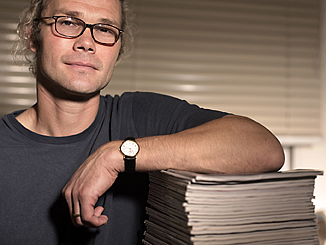Tel: 01782 734080
Fax: 01782 712378
e-mail: c.exley@keele.ac.uk
http://www.keele.ac.uk/aluminium
June 15, 2017
United States Department of Health & Human Services
National Institutes of Health
Food & Drug Administration
Centers for Disease Control & Prevention
200 Independence Avenue, S.W.
Washington, D.C. 20201
Re: Aluminum Adjuvants
Dear Directors:
I am an expert in the field of aluminum adjuvants and aluminum toxicity. I have been
working in this field for more than 30 years during which time I have written in excess of 150
peer-reviewed scientific publications on this subject.
I strongly support the contention that aluminum adjuvants in vaccines may have a role
in the etiology of autism spectrum disorder (ASD). My view is founded on a significant and
burgeoning body of peer-reviewed scientific evidence which makes the link between ASD
and exposure to aluminum through vaccinations and other sources. Examples of this literature from my own group are detailed below and I urge the HHS to take them into consideration in forming any future opinion on the safety of aluminum adjuvants in vaccines.
The Center for Disease Control’s claim on its website that “Vaccines Do Not Cause
Autism” is unsupported with respect to aluminum adjuvants and this claim stifles the
important research to determine the safety of aluminum adjuvants used in vaccines. As an
expert in the field of aluminum adjuvants and aluminum toxicity I solemnly declare that more research on the role of aluminum adjuvant in vaccines and neurological disorders, including ASD, is essential and urgently required.
Telephone number +44 (01782) 584211
Fax +44 (01782) 712378
Keele University, Staffordshire, ST5 5BG United Kingdom
Telephone number +44 (01782) 621111 http://www.keele.ac.uk
Yours faithfully
Christopher Exley PhD
Professor in Bioinorganic Chemistry
Honorary Professor, University of the Highlands and Islands
List of Recent, Relevant and Significant Publications From Our Group
Exley C, Siesjö P & Eriksson H (2010) The immunobiology of aluminium adjuvants: how do they really work?
Trends in Immunology 31, 103-109.
Exley C and House E (2011) Aluminium in the human brain. Monatshefte für Chemie – Chemical Monthly 142, 357-363.
House E, Esiri M, Forster G, Ince PG and Exley C (2012) Aluminium, iron and copper in human brain tissues donated to the medical research council’s cognitive function and ageing study. Metallomics 4, 56-65.
Exley C (2011) Aluminium-based adjuvants should not be used as placebos in clinical trials. Vaccine 29, 9289.
Exley C (2012) When an aluminium adjuvant is not an aluminium adjuvant used in human vaccination programmes. Vaccine 30, 2042.
Exley C (2012) The coordination chemistry of aluminium in neurodegenerative disease. Coordination Chemistry Reviews 256, 2142-2146.
Exley C, House E, Polwart A and Esiri MM (2012) Brain burdens of aluminium, iron and copper and their relationships with amyloid beta pathology in 60 human brains. Journal of Alzheimer’s Disease 31, 725-730.
Davenward S, Bentham P, Wright J, Crome P, Job, D, Polwart A and Exley C (2013) Silicon-rich mineral water as a non-invasive test of the ‘aluminium hypothesis’ in Alzheimer’s disease. Journal of Alzheimer’s Disease 33, 423-430.
Khan Z, Combadière C, Authier FJ, Itier V, Lux F, Exley C, Mahrouf-Yorgov M, Decrouy X, Moretto P, Tillement O, Gherardi RK, and Cadusseau J (2013) Slow CCL2-dependent translocation of biopersistent particles from muscle to brain. BMC Medicine 11:99.
Exley C (2013) Human exposure to aluminium. Environmental Science:Processes and Impacts 15, 1807-1816.
Ohlsson L, Exley C, Darabi A, Sandén E, Siesjö P and Eriksson H (2013) Aluminium based adjuvants and their effects on mitochondria and lysosomes of phagocytosing cells. Journal of Inorganic Biochemistry 128, 229-236.
Exley C (2014) Aluminium adjuvants and adverse events in sub-cutaneous allergy immunotherapy. Allergy, Asthma and Clinical Immunology 10, 4.
Exley C and Vickers T (2014) Elevated brain aluminium and early onset Alzheimer’s disease in an individual occupationally exposed to aluminium: a case report. Journal of Medical Case Reports 8,41.
Exley C (2014) What is the risk of aluminium as a neurotoxin? Expert Review of Neurotherapeutics 14, 589-591.
Mold M, Eriksson H, Siesjö P, Darabi A, Shardlow E and Exley C (2014) Unequivocal identification of intracellular aluminium adjuvant in a monocytic THP-1 cell line. Scientific Reports 4, 6287.
Telephone number +44 (01782) 584211
Fax +44 (01782) 712378
Keele University, Staffordshire, ST5 5BG United Kingdom
Telephone number +44 (01782) 621111 http://www.keele.ac.uk
Exley C (2014) Why industry propaganda and political interference cannot disguise the inevitable role played by human exposure to aluminium in neurodegenerative diseases, including Alzheimer’s disease. Frontiers in Neurology 5:212. doi: 10.3389/fneur.2014.00212.
Crépeaux G, Eidi H, David M-O, Tzavara E, Giros B, Exley C, Curmi PA, Shaw CA, Gherardi RK and Cadusseau J (2015) Highly delayed systemic translocation of aluminium-based adjuvant in CD1 mice following intramuscular injections. Journal of Inorganic Biochemistry 152, 199-205.
Exley C (2016) The toxicity of aluminium in humans. Morphologie 100, 51-55.
Mirza A, King A, Troakes C and Exley C (2016) The identification of aluminium in human brain tissue using lumogallion and fluorescence microscopy. Journal of Alzheimer’s Disease 54, 1333-1338.
Mold M, Shardlow E and Exley C (2016) Insight into the cellular fate and toxicity of aluminium adjuvants used in clinically-approved human vaccinations. Scientific Reports 6:31578.
Mirza A, King A, Troakes C and Exley C (2017) Aluminium in brain tissue in familial Alzheimer’s disease. Journal of Trace Elements in Medicine and Biology 40, 30-36.
Shardlow E, Mold M and Exley C (2017) From stock bottle to vaccine: Elucidating the particle size distributions of aluminium adjuvants using dynamic light scattering. Frontiers in Chemistry 4, 48.
Exley C (2017) Aluminium should now be considered a primary aetiological factor in Alzheimer’s disease. Journal of Alzheimer’s Disease Reports 1, 23-25.
Telephone number +44 (01782) 584211
Fax +44 (01782) 712378
Keele University, Staffordshire, ST5 5BG United Kingdom
Telephone number +44 (01782) 621111 http://www.keele.ac.uk



